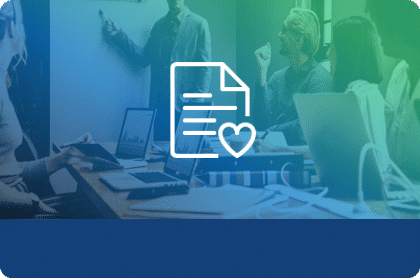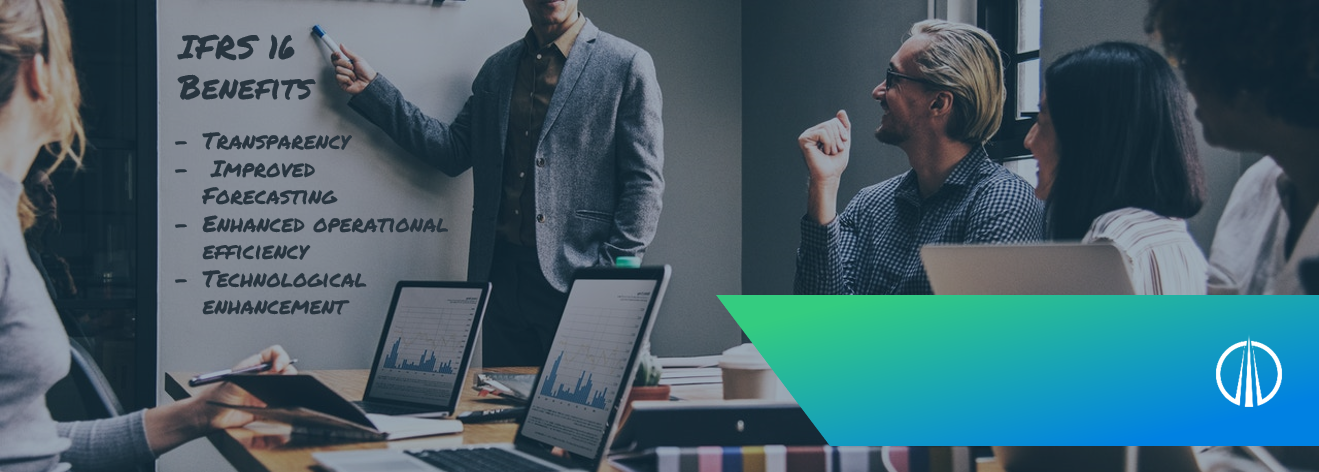BLOGS
Identifying the Organisational Benefits of the New Lease Accounting Standards

Following years of debate, the International Accounting Standards Board (IASB) issued the new IFRS 16 standard for the treatment of leases.
Applicable for accounting periods beginning on or after 1st January 2019 (that is from now), it will potentially have major impacts on group balance sheets and require significant work in advance of implementation to identify all group company leases. Ultimately, it could also affect negotiations on, and the structuring of, commercial leases.
Implementation of the standard will allow a business to comply with the new financial and accounting requirements but there are some very advantageous operational benefits to be enjoyed if they are recognised and acted on.
The balance sheet will certainly reflect the financial and accounting changes brought about by the adoption of one of either of the new accounting standards – IFRS 16 or ASC 842. However, there are going to be some very positive benefits that any business should be able to enjoy as a result of the correct and full implementation of the leasing standard which will include among other spin-offs, more accurate information, improved controls, better asset and liability tracking, cradle to grave asset management and more advantageous lease terms and conditions. These advantages will be better realised with the identification of and use of a suitable lease accounting software tool such as LOIS Lease Accounting (“LLA”) from Innervision. At the very least the new processes implemented and requirement for improved reporting will mean improvements in efficiencies, better use of human resources and a centralised lease knowledge base.
Contractual Obligations
The transition to IFRS 16 (or ASC 842) will require the identification and interpretation of all extant lease contracts to which a business is committed. The collation of these will immediately pose the opportunity to document and catalogue all outstanding lease obligations and form the basis of an accurate record as these are reduced by rental payments and added to by new lease contracts. Remember that even without an actual change to the lease,” reasonable certainty” affects the figures to be reported and applies to both the leasing of property as well as business assets, such as cars, production equipment and office facilities – now those reasonable certainties can be identified and recorded.
Asset and Liability Accuracy and Completeness
Across the business, there will have been branches, divisions and offices that have been employing assets acquired under leases but not necessarily centrally recorded. The exercise of gathering all lease documentation will result in an outstanding chance to record details of all assets held under lease. This will not just assist in making everyone aware of the availability of an asset but will also make the return of assets at lease end much more manageable.
Resource Identification and Efficiencies
The implementation of a software tool to harness and make available the information gleaned regarding a company’s obligations, liabilities and assets will allow users to better source requirements from within rather than assuming that a resource is not available. Age, usefulness, upgrades and potential refresh can all be recorded and acted upon with timely system generated alerts.
Strengthened Departmental Synergies
Lease accounting software can enable everyone to have access to a central database of assets, lease documentation, potential lessors and agreed terms and conditions. This can result in increased leverage with lessors as departments work together to acquire facilities, improved accounting with the transparency, and greater awareness of cross-functionality and departmental cooperation opportunities.
Simplified Audit Process and Trail
The new standards require that a lease is extant for as long as an asset remains in the possession of the lessee. That requires the recording of every event, upgrade or change in the life of the asset such as there will no longer be an expiry, possible run-on and then extension lease but just a single continuous lease. With a good software tool, there is the automatic calculation and generation of asset depreciation and amortisation charges, outstanding liabilities together with service and interest elements of any lease. The audit trail is always complete and available.
Improved Forecasting
A software solution such as LLA will provide the lessee with the ability to run forecasting reports and alerts that will inform the user of notice requirements, rental obligations, outstanding capital and interest reports and liabilities not capitalised. The right system will provide businesses with the facility to forecast future lease liabilities.
Technology Enabled Access to Central Lease Database
A browser-based cloud software solution, which has been purpose built and is continually subject to upgrades, gives access to and restricts access to a central repository of continually updated data relating to all lease agreements to which a business is subject to. Authorisation levels enable secure and authenticated records to be available to those able to change them or just generate reports. Access is secure and 24/7, data is securely held on the cloud and everyone is looking at the same version of a lease, asset or liability.
Integration with Existing Systems
The recording of all lease documentation, the setting of appropriate interest rates, the generation of depreciation and amortisation charges and the recognition of outstanding liabilities means that journals for general ledger, lease reporting requirements and up to date asset recording are all positive and realisable spin-offs.
Centralised Lease Negotiations
The collating and reviewing of all extent lease agreements can lead to an opportunity to renegotiate some or all with one or more lessors perhaps leading to improved terms and conditions, reduced interest rate, lower rentals or even less onerous return conditions. Going forward the experience may result in an improved capability when it comes to obtaining lease quotes, options and terms. Bundling may save costs and result in better planning.
Implementing the new standard is an intensive job, but by combining that implementation with a proven solution such as LOIS LLA, you get clear insight into a wide range of data about the entire lease portfolio, a secure centralised database with the ability to appreciate the assets available through contracted leases, timely alerts for notice periods on agreements and integration with existing systems. The business processes required to accommodate IFRS 16 have as shown above the potential to reap unexpected advantages. Better information and controls can help enable better tracking and asset management, avoid the holding of unused or obsolete assets and enable the negotiation of better lease terms throughout the organisation.
For more information on a software solution that is proven, referenceable and affordable please contact Innervision.co.uk and ask for a demonstration of LOIS Lease Accounting.
To gain a better understanding of the solutions features, functionality and suitability, you can access the LLA brochure below:
Disclaimer: this article contains general information about the new lease accounting standards only and should NOT be viewed in any way as professional advice or service. The Publisher will not be responsible for any losses or damages of any kind incurred by the reader whether directly or indirectly arising from the use of the information found within this article.










